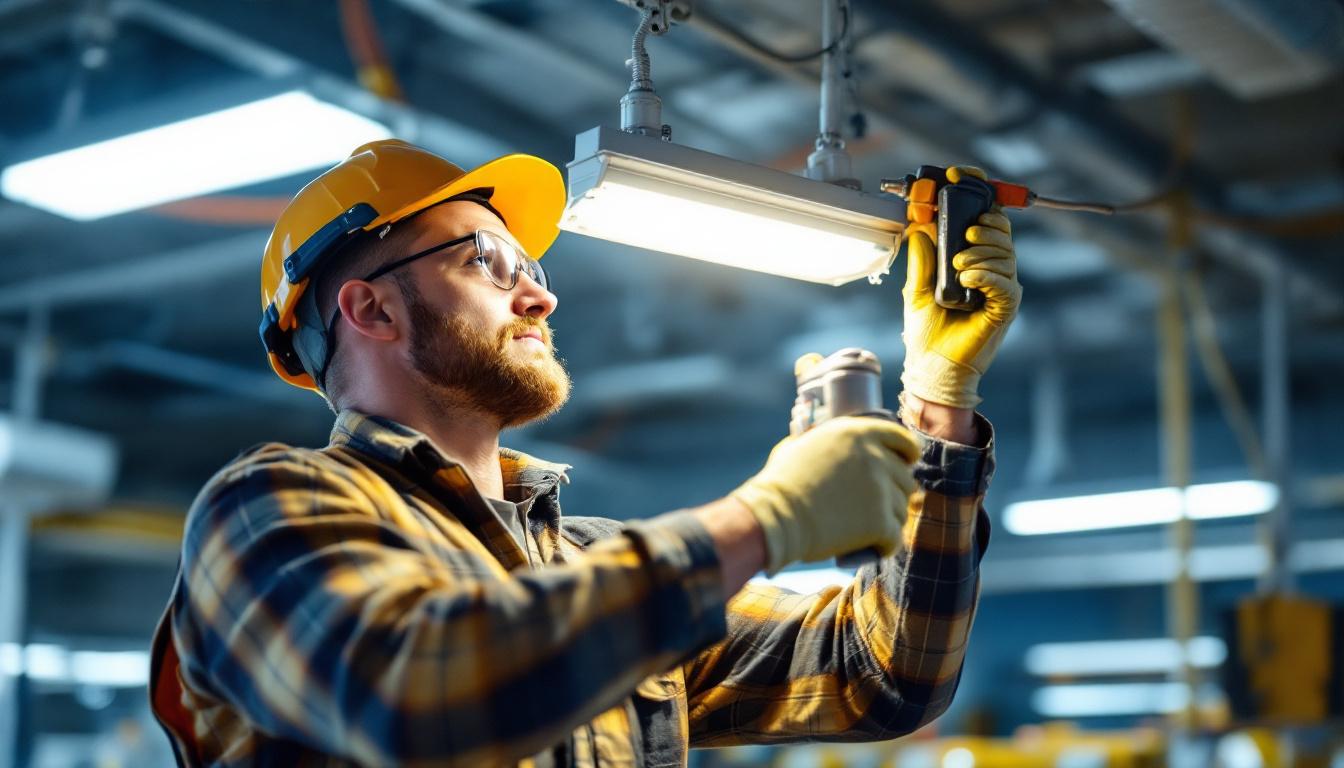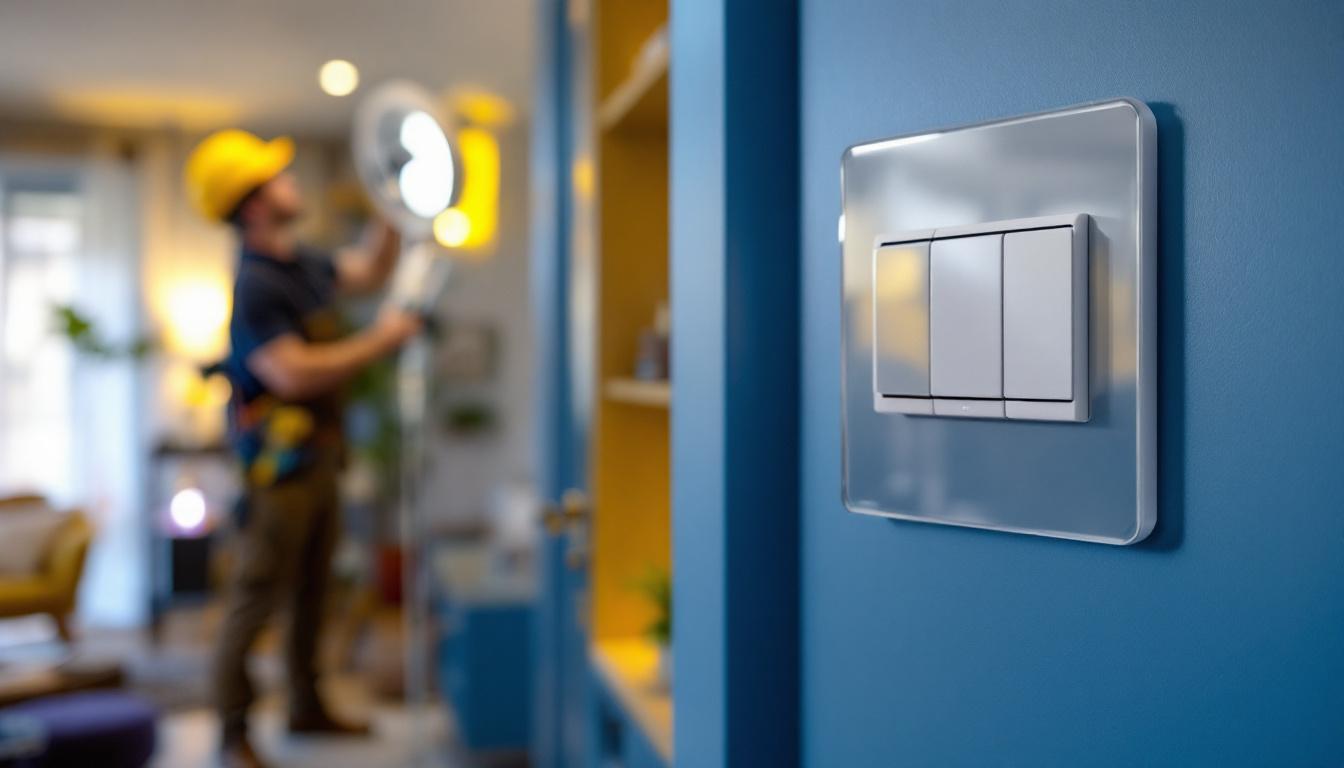
For lighting contractors, understanding the intricacies of ballast replacement is essential for ensuring optimal performance and longevity of lighting systems. This article addresses common questions that arise during the process, providing valuable insights for both seasoned professionals and newcomers to the field.
A ballast is a critical component in fluorescent and HID lighting systems, serving to regulate the current to the lamp. It provides the necessary voltage to start the lamp and maintains the current flow during operation. Without a functioning ballast, lights may flicker, fail to start, or produce inadequate illumination. This regulation is vital not only for the immediate functionality of the lighting but also for the longevity of the lamps themselves, as improper voltage can lead to premature burnout.
In addition to starting and regulating the lamp, ballasts also play a role in energy efficiency. A well-functioning ballast can enhance the overall performance of the lighting system, leading to lower energy consumption and reduced operational costs. Understanding the importance of ballasts is crucial for contractors who aim to deliver high-quality lighting solutions to their clients. Furthermore, with the increasing emphasis on sustainability and energy conservation, selecting the right ballast can contribute significantly to a building’s overall energy profile, making it an essential consideration for modern construction and renovation projects.
There are primarily two types of ballasts: magnetic and electronic. Magnetic ballasts are the traditional type, often found in older fluorescent fixtures. They are generally heavier and can produce a hum during operation. In contrast, electronic ballasts are more modern, offering benefits such as higher energy efficiency, reduced flicker, and quieter operation. Electronic ballasts also tend to have a longer lifespan, which can reduce maintenance costs over time.
When replacing a ballast, it’s essential to identify the type of ballast currently in use. This knowledge will guide the selection of a compatible replacement and ensure optimal performance of the lighting system. Additionally, many electronic ballasts come with features such as dimming capabilities and compatibility with smart lighting systems, allowing for greater control over the lighting environment. This adaptability is particularly beneficial in settings like offices or retail spaces, where lighting needs may vary throughout the day.
Recognizing the signs of a failing ballast can save time and resources. Common indicators include flickering lights, dim illumination, and a buzzing noise coming from the fixture. In some cases, the ballast may even overheat, leading to potential fire hazards. These symptoms can often be mistaken for issues with the lamp itself, making it crucial for contractors to accurately diagnose the problem to avoid unnecessary replacements.
Contractors should be vigilant in monitoring these symptoms, as they can indicate not only a failing ballast but also other underlying issues within the lighting system. Prompt diagnosis and replacement can prevent further damage and enhance client satisfaction. Moreover, regular maintenance checks can help identify potential ballast issues before they escalate, ensuring that clients enjoy uninterrupted lighting and the associated benefits of a well-functioning system. This proactive approach not only safeguards the investment in lighting but also reinforces the contractor’s reputation for reliability and expertise in the field.
Replacing a ballast is a straightforward process, but it requires careful attention to detail to ensure safety and effectiveness. Here are the general steps involved in replacing a ballast.
Before beginning any electrical work, safety should be the top priority. Always turn off the power to the fixture at the circuit breaker to prevent electrical shock. Additionally, wearing safety goggles and gloves is advisable to protect against any potential hazards.
It’s also wise to use a voltage tester to confirm that the power is off before proceeding with the replacement. These precautions help ensure a safe working environment for contractors. Furthermore, it’s beneficial to have a first aid kit nearby, just in case of any minor accidents. Familiarizing yourself with the location of the circuit breaker and ensuring that it is easily accessible can also save time and reduce stress during the replacement process.
Once safety measures are in place, the following steps can be taken to replace the ballast:
Following these steps can help ensure a successful ballast replacement and restore functionality to the lighting system. It’s important to choose the right type of ballast for your specific lighting fixture, as there are various options available, including electronic and magnetic ballasts. Understanding the differences can help you make an informed decision and improve the efficiency of your lighting system. Additionally, if you notice flickering lights or a humming sound after replacing the ballast, it may indicate that the new ballast is not compatible with the existing lamps, which could necessitate further adjustments or replacements.
Selecting the appropriate replacement ballast is crucial for maintaining the performance of the lighting system. Several factors should be considered when making this decision.
One of the primary considerations when choosing a replacement ballast is compatibility with the existing fixture. Different types of lamps require specific ballasts, and using an incompatible ballast can lead to poor performance or even damage to the lamp.
Contractors should refer to the lamp specifications and the existing ballast’s information to ensure they select a compatible replacement. This attention to detail can prevent future issues and enhance the longevity of the lighting system.
Energy efficiency is another critical factor to consider. Many modern ballasts come with energy-saving features that can significantly reduce electricity consumption. Choosing a ballast with a high energy efficiency rating not only benefits the environment but also helps clients save on their energy bills.
Contractors should look for ballasts that meet or exceed ENERGY STAR standards, as these products are designed to provide optimal performance while minimizing energy usage.
Even experienced contractors can make mistakes during ballast replacement. Being aware of common pitfalls can help ensure a smooth and successful process.
One of the most critical mistakes is failing to turn off the power before beginning work. Not only does this pose a significant safety risk, but it can also lead to damage to the ballast or fixture. Always double-check that the power is off before starting any electrical work.
Another common error is making incorrect wiring connections. It’s essential to refer to the notes taken during the disconnection of the old ballast and to follow the wiring diagram provided with the new ballast. Incorrect connections can lead to malfunctioning lights or even electrical hazards.
Proper maintenance can extend the life of both the ballast and the lighting system as a whole. Here are some tips for ensuring longevity.
Conducting regular inspections of the lighting system can help identify potential issues before they become significant problems. Look for signs of wear and tear, such as frayed wires or corroded connections, and address them promptly.
Additionally, keeping the fixtures clean can improve light output and reduce strain on the ballast. Dust and debris can accumulate over time, affecting the performance of the lighting system.
Consider recommending LED lighting systems to clients as a long-term solution. LEDs do not require ballasts, which eliminates the need for future replacements. Furthermore, LED systems are highly energy-efficient and have a longer lifespan compared to traditional fluorescent or HID systems.
Lighting contractors often have questions about ballast replacement. Here are some of the most frequently asked questions.
The lifespan of a ballast can vary significantly based on usage and environmental conditions. Generally, a ballast may last anywhere from 10 to 20 years. Regular inspections can help determine if a ballast needs replacement sooner due to signs of wear or malfunction.
While it is possible for someone with basic electrical knowledge to replace a ballast themselves, it is recommended that a qualified lighting contractor perform the replacement. This ensures that the job is done safely and correctly, reducing the risk of future issues.
If the lights do not work after replacing the ballast, it is essential to troubleshoot the issue. Check all wiring connections to ensure they are secure and correct. Additionally, verify that the new ballast is compatible with the existing lamp. If problems persist, further investigation may be necessary to identify other potential issues within the lighting system.
Replacing a ballast is a fundamental task for lighting contractors that requires knowledge, precision, and attention to detail. By understanding the role of ballasts, recognizing signs of failure, and following proper replacement procedures, contractors can ensure the longevity and efficiency of lighting systems.
Moreover, staying informed about the latest advancements in ballast technology and energy efficiency can help contractors provide the best solutions for their clients. Whether it’s through regular maintenance or recommending upgrades, a proactive approach can lead to satisfied customers and a successful lighting business.
Ready to elevate your lighting projects with the best in the business? Look no further than LumenWholesale for all your lighting needs. Our extensive selection of spec-grade lighting products ensures you have access to the highest quality options for every ballast replacement and lighting upgrade. With unbeatable wholesale prices and the convenience of free shipping on bulk orders, you can trust that you’re getting the best value without any hidden costs. Don’t compromise on quality or price. Visit LumenWholesale today and experience the perfect blend of quality, affordability, and convenience for your lighting business.

Discover why lighting contractors should prioritize fan wall switches in their projects.

Discover why flush mount ceiling lights are essential for kitchen lighting projects and why lighting contractors prioritize them.

Explore the advantages and drawbacks of using LED lamps with remote controls for lighting contractors.

Discover why barn style lights are becoming a staple for lighting contractors.